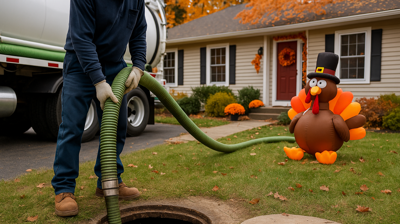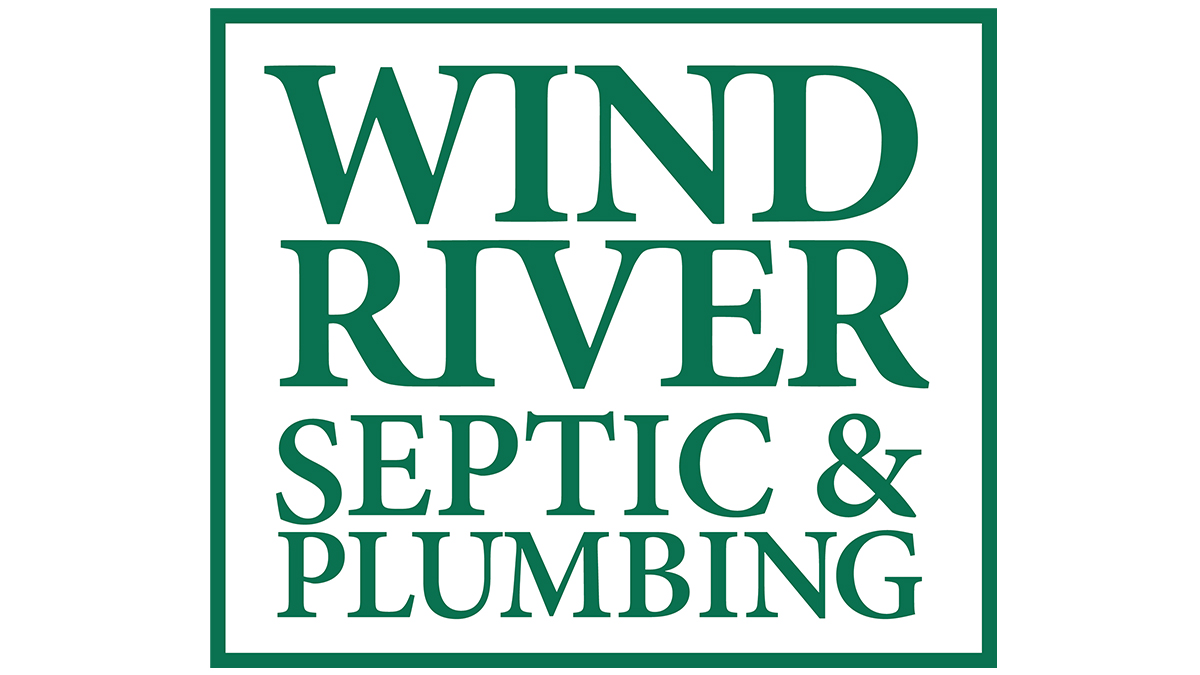What's the first thing you think of when you get a clogged drain? Perhaps its the nuisance clogs that occur in toilets and sinks that need to be plunged. These clogs are a pain, but not the real nightmare that arises with a main sewer line clog or collapse.
All of the drainage pipes run into the main sewer line, which is underground and outside the home. When this line gets clogged or collapses, it can cost thousands to fix, and you'll have no drainage until it does. Luckily, the signs of a collapsed sewer line are obvious, so you'll be able to request professional help before it gets any worse.
The quicker you notice changes, the better the chances are that it won't cost you an arm and a leg to repair the damage.
These are 8 signs you can look out for to see if your sewer line is clogged or collapsed:
1. Frequent Backups
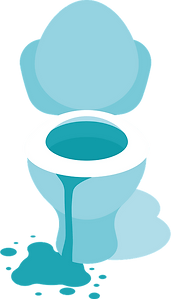
When the toilet backs up, your bathroom gets soaked in wastewater. It's disgusting and you're more likely to call a plumber than if the sink and bathtub was backed up.
The truth of the matter is that frequent backups, especially those in lower regions of your home, are signs that your main sewer line is clogged or collapsed.
If you have an area on your commercial property that is closest to the main sewer line, you'll most likely notice it first in those areas. What happens is that the water from all the other drains converges into the main sewer line. If the pipe is collapsed or clogged, then the water has nowhere to go; it reverses and uses the path of least resistance, which is likely one of the areas previously mentioned.
If the pipe collapses and there is access to the surrounding soil, the soil will slowly absorb the water, and the water will recede. Since the pipe is still collapsed, it will continue to back up. Unless it occurs in a place of frequent use, it may be some time before you notice it, and the issue will continue to worsen over time.
2. More Than One Fixture Clogs
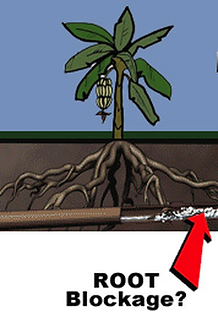
Since all the drainage connects to the main sewer line, when it collapses, most drains in your home get clogged.
It could manifest in your toilet, bathroom sink, and other drain outlets. If the collapse is significant, plunging the toilet may not be effective in removing the water. Instead, the collapsed pipe either continues to drain the water slowly or not at all.
This indicates that a professional needs to conduct a video pipe inspection on your sewer line to determine where the clog or collapse occurred, a crucial factor in determining the best course of action to resolve the issue.
Several factors may have contributed to the collapse, including pipe erosion, the accumulation of grease and other debris in the pipe. Tree roots can also grow into the pipe, causing it to break and collapse.
Since this issue occurs underground, it can be a significant undertaking to repair the sewer line.
3. Your Plumbing Gets a Mind of Its Own
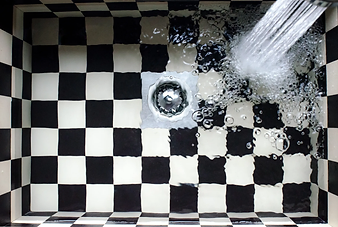
When your main sewer pipe clogs or collapses, it can impact your drain system in surprising and disturbing ways.
The drainage system in your commercial property or business is a complicated tapestry of connections, bends, and turns. When your sewer line clogs, it can cause drains to emit strange sounds, odors, or cause water or sewage to bubble up.
You might think your toilet is haunted, but don't worry, it's just air rushing back to the surface.
If your toilet starts bubbling frequently, try running the bathroom faucet for a bit and see if the bubbling continues after that. If you also hear gurgling noises from your toilet, that's another sign that something isn't right.
4. An Odor of Sewer Gas

If you can smell sewer gas in or around your property, this is a tell-tale sign that there is a crack somewhere in your sewer system.
A sanitary sewer should be air-tight everywhere, with the exception of vent stacks on your roof, which allow for the sewage to move downhill. You should never smell sewer odor, and if you do, it means there is a crack or opening in your sanitary sewer lines.
Sewage backups into other drains are not only smelly and disgusting, but also a health hazard to your customers. Wastewater teems with bacteria and other pollutants that cause illness. The disease it spreads can range from a minor cold to serious health problems.
5. Your Grass Grows Like Crazy
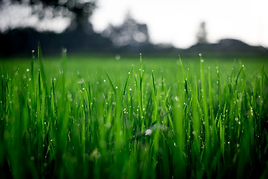
One of the most common side effects of having an area of your lawn saturated with water is that the grass in that area grows faster than in other areas.
It might start out slowly as water seeps to the surface; however, eventually, you will see a dramatic increase in growth over the collapsed sewer line.
You'll mow the grass, but a particular area continues to grow faster than other parts of your lawn. If the water puddles, then the grass in that area can become oversaturated and will die.
It takes time for this to happen, so if the grass dies off or the area of fast-growing grass becomes larger, it could become a major project to repair the collapsed pipe.
6. Soggy Lawn
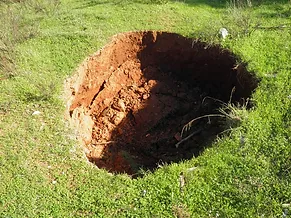
Along with greening, a broken sewer line can make your lawn soggy and foul-smelling.
This can cause a sinkhole to form around the break and make this area of your yard unusable until the cracked sewer line can be repaired. The swampy conditions will also attract insects and rodents that may then find their way into your nearby businesses, potentially spreading both filth and disease.
7. Insect and Rodent Infestation
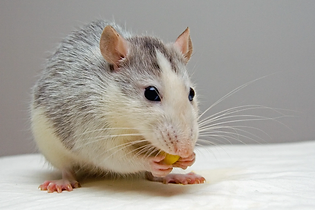
On that note, an unusual increase in insect and rodent activity can be a sign that you have a broken sewer line.
Rodents make their homes in sewers and can squeeze through the most minor cracks to find their way into your home. The same can be said for insects that can wriggle through a cracked drain pipe and breed in stagnant water, allowing them to multiply rapidly.
Both rodents and insects can cause health issues and need to be dealt with, along with the sewer line breakage itself.
8. Broken Slabs and Wall Cracks
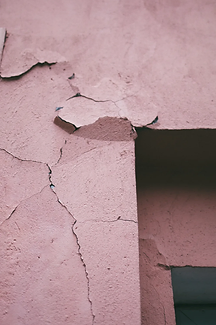
Buildings will often develop cracks in the concrete slab and supporting walls as they settle and the ground beneath them shifts.
However, if your business or commercial property is developing new cracks, it may be because you have a broken sewer line that is causing the soil supporting the foundation to erode. If the crack is caused by a leak, the situation is unlikely to improve over time.
More water will continue to wash away the surrounding soil until the foundation can no longer support the weight of the structure above. In a worst-case scenario, the building itself may collapse.
A thorough video inspection can determine if you have sewer line breakage or another issue that is causing cracks in your business.
Broken Sewer Line Solutions

So you know how to spot the signs of sewer line damage, but how do you fix the problem? The sewer line experts at Wind River Environmental can help you with that one. We have the technology and expertise necessary to repair your collapsed sewer line.
We can precisely identify the location of the clog or collapse using our video inspection services, and then outline your options for pipe repair. We will do everything possible to prevent you from needing a complete sewer replacement, but sometimes it may be necessary, depending on the extent of the damage. However, we do not replace or install new pipe systems.
These are some of the most common repairs we perform:
Cured-in-Place Pipe Lining (CIPP)
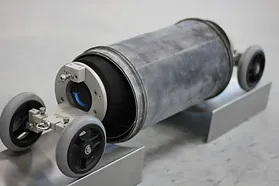
Through pipe lining, we'll give you new pipes from the inside out. We can also line existing sewer pipes with an epoxy resin-covered sleeve to prevent pipe cracks.
First, we'll clean out the pipe using our jet vac cleaning service, and then we'll apply the lining, which will harden in just a few hours. This is the most popular method we offer because of its versatility and ease of installation, since it can be done in a day, you won't have to shut down your property for very long, if at all.
The coating also boasts an average lifespan of 50 years.
QuickLock Point Repair
The QuickLock Point Repair method involves utilizing a stainless steel sleeve with a structural body, covered by a seamless compression seal.
Through a manhole, the sleeve is inserted into the pipe and delivered to the damaged section. The sleeve is then mechanically pressed against the inner pipe wall. Using an inflatable packer, the sleeve is then expanded and permanently locked into position.
This is another popular method when stopping the water flow isn't possible, as this repair method boasts no cure time and can be done in the presence of water. The liner can be done in multiple locations and has an average lifespan of 50 years.
Need Preventive Pipe Maintenance? We Can Help.
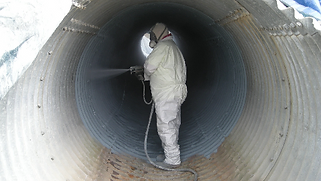
Preventive maintenance is crucial in helping to prevent sewer line damage from occurring in the first place. With regular inspections and drain cleaning services, you can prevent major debris buildup in your pipes and avoid issues such as cracks, clogs, or bursts.
For all your sewer line repair needs, you can rely on Wind River Environmental to get the job done. If you need more information or would like to schedule any of these services, please contact us today. One of our sewer line repair technicians will be happy to assist you.


